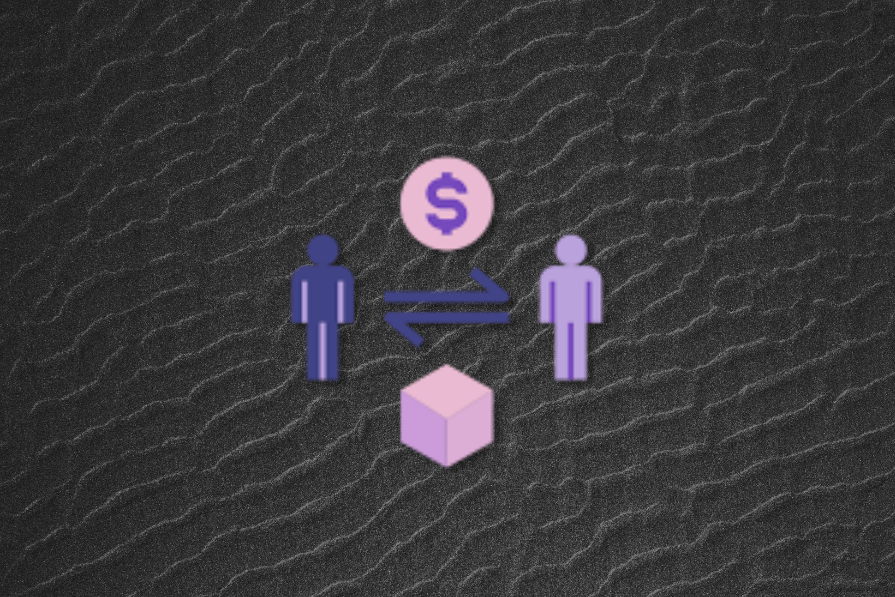Product Management News
Medium
175

Image Credit: Medium
Rapido’s “Bike Parcel”: A Patch, A Hack, or Product Genius?
- Rapido made a quick move to introduce 'Bike Parcel' by switching from 'Bike Taxi' to continue user engagement.
- The change aimed at survival mode rather than developing a new feature to sustain user and rider interaction.
- Despite the label switch, the core service of providing fast and cheap transportation from point A to B remained unchanged.
- Implementing Bike Parcel helped in maintaining rider availability on the platform and preventing potential loss.
- The strategy involved utilizing existing logistics flow without significant additional infrastructure, showcasing the pressure-driven product development.
- Product development under pressure may not prioritize perfection but focus on quick decisions to buy time and sustain operations.
Read Full Article
10 Likes
Medium
244

Image Credit: Medium
Choosing the Right CMS: How We Help Our Clients Decide
- When a potential client arrives with a strong CMS preference, understanding the reasons behind it is crucial, such as familiarity, content migration concerns, or lack of exposure to other platforms.
- Evaluation of CMS options starts early, considering both client's editorial and end users' needs to recommend the right strategy.
- Factors like design requirements, editorial workflows, organizational structures, and technical considerations play significant roles in CMS evaluation.
- Technical aspects like performance, scalability, developer community, and tech stack are also key considerations during CMS evaluation.
- The evaluation process involves collaboration and a deep understanding of project needs and constraints to find a CMS that fits well.
- Commonly used CMS platforms include Wagtail, Statamic, and Payload, each offering unique strengths in terms of flexibility and content management.
- Wagtail is suitable for complex editorial sites, Statamic excels in admin experience for static content, while Payload offers high customization potential.
- Each CMS platform has its pros and cons, with considerations like customizability, scalability, content modeling, and ease of use guiding their selection.
- Choosing the right CMS can significantly impact editorial team efficiency and content quality, aligning with the client's vision and goals.
- The goal is to implement a CMS that enhances the editorial experience, allowing teams to focus on creating exceptional content.
Read Full Article
14 Likes
Medium
17

Image Credit: Medium
The Art of Being Less Wrong: Estimating in Data Projects
- Estimation in data projects is about being less wrong rather than aiming to be right.
- Four proven estimation methods are discussed in the context of building a modern data pipeline on Azure.
- One method involves drawing estimates from past similar projects, such as ingesting data which took 4 weeks previously.
- Another method involves doing calculations based on known metrics, like the time it takes to complete dbt models for dimension tables.
- Using the PERT formula, a time estimate is derived for building a Delta Live Table pipeline, considering optimistic, pessimistic, and most likely scenarios.
- Breaking down the project into smaller, manageable tasks allows for more accurate estimation by considering various factors like stage, predictability, uncertainty, and commitment levels.
- Estimation is compared to a lens that helps in seeing more clearly, even if the end result may still be somewhat inaccurate.
Read Full Article
1 Like
Medium
142

Image Credit: Medium
The Product Leader’s New Job: From Optimizing Clicks to Architecting Trust
- The role of product leaders is shifting from optimizing clicks to focusing on architecting trust in the emerging 'agent-first' economy.
- Product leaders are facing a 'Crisis of Verifiability' as autonomous AI agents become the primary users, requiring trustworthy and efficient services.
- Old product leadership strategies like clever UX and brand storytelling are becoming obsolete in this new reality.
- Optimizing for clicks is no longer sufficient; product leaders now need to focus on building systems that can survive and thrive in the changing landscape.
- Product leaders must adapt their skills to address 'Ethical Debt' – the liability of unverified AI outputs, broken user trust, and systemic friction.
- The shift in identity for product leaders emphasizes the need to architect trustworthy systems over just building features.
- Moving from an iterative mindset to one of instrumentation is crucial for product leaders to ensure system clarity and integrity.
- The focus is now on building resilient products and systems that can withstand external shocks in a volatile market.
- Product leaders need tools like a 'flight simulator for product strategy' to model ecosystem reactions before making decisions.
- Building trustworthy, verifiable, and resilient systems is emphasized over just focusing on engaging user interfaces to succeed in the new era.
Read Full Article
8 Likes
Discover more
- Programming News
- Software News
- Web Design
- Devops News
- Open Source News
- Databases
- Cloud News
- Operating Systems News
- Agile Methodology News
- Computer Engineering
- Startup News
- Cryptocurrency News
- Technology News
- Blockchain News
- Data Science News
- AR News
- Apple News
- Cyber Security News
- Leadership News
- Gaming News
- Automobiles News
Medium
128

I Bought 30 Million Verified Emails So You Don’t Have To – Get It Now and Sell Like Crazy
- A seller is offering 30 million verified emails for sale, including those from Nigeria, USA, and UK.
- The email list includes various demographics such as business owners, job seekers, buyers, and creators.
- The seller is providing this offer to a limited number of serious individuals.
- Included in the offer is a Cold Email Starter Guide as a free bonus.
- Buyers receive lifetime access and immediate download after payment.
- The target audience for the email list includes affiliate marketers, entrepreneurs, product sellers, coaches, freelancers, and individuals seeking leads for email campaigns.
- This deal is emphasized for quickly building an audience, saving money on ads, and reaching a wide audience with the right cold email strategy.
- Interested individuals can access the offer instantly through a provided link.
- Hashtags related to the offer are: #EmailMarketing #VerifiedEmails #DigitalMarketing #SideHustle #ColdEmail #MakeMoneyOnline #NigeriaHustle #MarketingTools #SelarSales.
Read Full Article
7 Likes
Medium
302

From Developer to Product Manager: What My First Week Looked Like
- The individual initially considered getting an MBA or professional certifications to transition from a developer to a product manager, feeling confused and overwhelmed.
- Enrolled in the NextLeap Product Management Fellowship, a hands-on program that provided a deep understanding of product thinking, and graduated as a Top Fellow.
- Crafted a product portfolio with case studies, teardowns, and wireframes to demonstrate skills and thinking, along with refining the resume for product management roles.
- Applied to numerous positions, kept preparing, and eventually secured a product manager role after clearing all interview rounds.
- Achieving readiness and being prepared for opportunities were key factors in successfully transitioning to the product manager role.
- The importance of being approachable and pleasant during onboarding to facilitate getting up to speed easily was highlighted.
- Acknowledging the learning curve, the individual focused on absorbing information, reflecting, asking questions, and iterating in the new role.
- Taking ownership of onboarding and ramping up like managing a roadmap was emphasized for a product manager.
- Apart from product development, product managers are tasked with building trust, alignment, and momentum in their roles.
- As the person settles into the first week as a product manager, they focus on meaningful work, growth, and gradually adjusting to the role and its components.
- Feeling content and where they are meant to be for the first time in a while, showing a sense of fulfillment in the new career path.
Read Full Article
18 Likes
Logrocket
391

Image Credit: Logrocket
Skipping product discovery: When it’s better to go ahead and ship
- Product discovery is crucial but not always necessary - skipping it can speed up product development.
- Discovery is about understanding what to build through research and validation before development.
- It's recommended to invest in discovery when starting from scratch, entering new user segments, or innovating.
- However, skipping discovery can be justified if the feature development is faster than research.
- For time-sensitive decisions, launching quickly may outweigh detailed discovery processes.
- High confidence, immediate development needs, and strategic bets are cases warranting skipping discovery.
- Focus on discovery for new ventures, but consider skipping when confidence is high or time is of the essence.
- Strategic decisions sometimes require fast actions and risk evaluation rather than extensive user research.
- Building successful companies involves a balance of user input and strategic choices.
- Product discovery is essential but should be balanced with practical considerations for efficient product delivery.
Read Full Article
23 Likes
Medium
346

Image Credit: Medium
Becoming a Product Superhero
- A product manager can draw inspiration from unexpected sources like Domino’s Pizza Tracker and Marvel Studios to enhance product strategy.
- Marvel Studios serves as a compelling case study for product strategy, showcasing successes, failures, and the importance of adapting.
- The evolution of Marvel Studios from its inception in 2008 with Iron Man to its current struggles provides valuable insights for product managers.
- Lessons can be gleaned from Marvel's strategic journey, as outlined in The Wall Street Journal's recent article 'Disney Wanted More From Marvel. Now It Wants Less' by Ben Fritz.
- The article discusses Marvel's past dominance and recent challenges within the cinematic universe.
- Marvel's strategic evolution offers valuable takeaways for product managers on what works, what doesn't, and the need for strategic pivots.
- The author reflects on his childhood fascination with superheroes and relates it to his current role as a product manager.
- He details his experience of following Marvel Studios' growth and strategy since the launch of Iron Man in 2008.
- The Wall Street Journal article sheds light on Disney's changing expectations from Marvel Studios and its impact.
- Product managers can draw parallels between superhero narratives and product development strategies for innovation and success.
- Analyzing Marvel Studios' journey can offer product managers insights into long-term strategy planning and adaptation.
- Lessons learned from Marvel's successes and setbacks can inform product managers' decision-making processes and strategic approaches.
- The fusion of childhood enthusiasm for superheroes with professional growth as a product manager emphasizes the importance of drawing inspiration from diverse sources.
- The article by Ben Fritz delves into Marvel Studios' trajectory, highlighting shifts in Disney's expectations and Marvel's recent challenges.
- Marvel's story serves as a valuable narrative for product managers navigating the complexities of strategic decision-making and adaptation in the competitive market.
- Drawing insights from Marvel Studios' experiences can empower product managers to innovate, pivot, and achieve long-term success.
- Marvel Studios' strategic journey offers a rich tapestry of lessons for product managers to enhance their approach to product development and strategy.
- The amalgamation of product management skills with a passion for comic book narratives underscores the versatility and creativity required in today's competitive product landscape.
Read Full Article
20 Likes
Link In Bio
279

Image Credit: Link In Bio
What does "social-first" even mean?
- Rachel will be taking time off over the next two weeks and guest writers will contribute.
- Alice Chen, Senior Director of Social and Influencer at Away, will take over the strategy for paid subscribers.
- Away had its best-performing organic post collaborating with Darshen and Samuel.
- The video had over 1 million views by tweaking the format slightly.
- Alice will discuss the concept of 'social-first' in this post.
Read Full Article
15 Likes
UX Design
22

Image Credit: UX Design
The 5-step AI UX playbook to deliver high-impact products
- The article presents a 5-step AI UX playbook for delivering high-impact products, focusing on strategic considerations when crafting AI experiences.
- The steps include doing it for the right reasons, assembling an AI A-Team, knowing what you're working with, laying the groundwork, and shaping the future together.
- It emphasizes identifying real user problems, assessing AI suitability, building relationships with key stakeholders, assessing product intelligence maturity, and defining AI design principles.
- The playbook suggests fostering relationships, assessing technical readiness, and using AI in design workflows to enhance UX practices.
- It also covers assessing platform readiness, visualizing roadmap milestones, measuring impact, and making decisions based on compelling research synthesis.
- The playbook concludes by highlighting the importance of organizational alignment, technical preparedness, and design leadership for successful AI product implementations.
Read Full Article
1 Like
Insider
284
Image Credit: Insider
I quit my high-paying product management job to become a full-time artist. My tech skills have helped my business soar.
- Katie McGowan left her high-paying product management job to pursue a full-time art career in April, leveraging her tech skills to automate processes and boost her art business's growth.
- She used contract work to fund her art business, validating market demand and making a successful transition to working as a full-time artist.
- Investing in herself, Katie funded and ran her solo exhibition, sold paintings, and gained the confidence to fully commit to her art career.
- Scaling for growth, she made revenue from original works and print sales, using Shopify and print-on-demand to automate orders and streamline processes.
- Utilizing A/B testing for creatives, Katie experimented with content on Instagram, accumulating millions of views and attracting new opportunities.
- After establishing consistency and a clear path for growth, Katie knew it was time to quit her corporate job and focus on her art business full-time.
- Katie's transition from a corporate career to creative entrepreneurship reflects her dedication, strategic approach, and utilization of tech skills.
- Learning valuable lessons, Katie emphasizes the importance of treating creativity like a business, leveraging existing skills, creating opportunities, and making informed changes.
- Her journey highlights the gradual process of building a successful creative venture and the significance of timing, learning, and adapting for a successful career pivot.
- Katie's future plans include studying art in Florence, organizing exhibitions, launching limited edition prints, and continuing to grow her art business.
Read Full Article
17 Likes
Dev
217

Image Credit: Dev
February’25 Updates: Accessibility Test Scheduling, Latest Features in SmartUI, Insights, and More! | LambdaTest
- February was packed with new features and improvements tailored for users, including accessibility test scheduling and SmartUI upgrades.
- The Accessibility Scheduling feature now allows automated accessibility scans to maintain compliance effortlessly.
- Support for locally hosted web pages with Tunnel and direct bug report sending to tools like Jira during accessibility testing has been added.
- Self-signed certificate support for real-time testing enables secure testing of HTTPS-only features in internal environments.
- Debugging Flutter tests on iOS is now more efficient with direct access to console logs for quicker issue identification.
- SmartUI introduces enhanced features like improved UX for drawing regions on screenshots and bulk review of variants.
- SmartIgnore integration with SmartUI public APIs, moving PDFs to baselines, executing JavaScript with SmartUI CLI are among the new SmartUI features.
- HyperExecute enhancements include artifact extraction on job abortion, afterEachScenario flag for test cleanup, RBAC for projects, and UI/UX improvements.
- Insights now offer capabilities like filtering custom data for builds, a new widget for app automation, and export of usage reports in Excel format.
- New features in Insights also include the 'Created by' column for dashboards, sorting data based on columns, admin controls for dashboards, and filtering deleted/disabled test builds.
- February's updates aim to improve testing efficiency with a focus on user experience and enhanced features across various tools and functionalities.
Read Full Article
13 Likes
Medium
248

The AI Mindset: How Product Managers Can Thrive in the Age of Artificial Intelligence
- Approach AI with curiosity and a willingness to learn, experiment, and adapt.
- Start small, try new tools, and treat every experiment as a learning opportunity.
- Use AI-powered analytics to uncover patterns in customer feedback, market trends, and product usage.
- Let data inform your intuition, not replace it; combine AI insights with your product instincts.
- Focus on connecting AI insights to real customer value.
- Deepen understanding of customer needs, set bold visions, and align teams around outcomes.
- Collaborate with data scientists, engineers, and designers to integrate AI into product development.
- Stay updated with new AI trends, attend workshops, and foster a culture of experimentation.
- AI enhances abilities but human traits like empathy, creativity, and ethical judgment are crucial.
- Use AI to connect with users, build trust, and deliver delightful experiences.
- Product managers should see AI as a partner in innovation, nurturing an adaptable, data-informed, and customer-obsessed mindset.
- AI is not a threat but a tool to lead teams and products into an AI-powered future.
Read Full Article
14 Likes
Medium
386

Image Credit: Medium
AI-Powered Product Discovery Isn’t a Phase — It’s a Continuous Practice.
- AI-powered product discovery is a continuous practice that can support good product thinking in smarter and faster ways.
- Product discovery involves replacing assumptions with evidence and should be practiced continuously as a team.
- Discovery should be integrated into the collaboration process within product teams and with stakeholders.
- This continuous discovery approach builds long-term learning and aligns with Teresa Torres' product trio approach.
- The focus is on problem-solving rather than just fulfilling features.
- The use of AI, specifically GenAI, can help summarize feedback, simulate user journeys, and identify dependencies.
- The emphasis is on listening effectively to understand what blocks teams from progressing faster.
- Continuous discovery enhances knowledge before engaging with real users.
- AI supports product discovery but doesn't replace the need for good product thinking.
- It is essential to continually collaborate and build insights to make informed product decisions.
- Product discovery should not be limited to fitting in between sprints; instead, it should be integrated into the team's workflow.
- The goal is to reinforce problem understanding and not just seek permissions for product development.
- Continuous conversations within product teams and with stakeholders are crucial for successful product discovery.
- The small, repeated actions in product discovery lead to long-term learning and informed decision-making.
- Platform product discovery focuses on identifying obstacles to team productivity and addressing them through design.
- Adopting GenAI can aid in summarizing feedback, simulating user experiences, and modeling dependencies.
- The key lies in how effectively one listens and leverages insights for product development.
Read Full Article
23 Likes
Medium
173

Image Credit: Medium
Tester Said No to Bad Release & Saved the Product
- Testers often struggle to say 'No' due to time constraints and stakeholder pressures in software testing.
- A software tester's refusal to launch an unready application saved both companies' reputations and validated quality assurance practices.
- The tester documented critical bugs and regression issues, signaling application unreliability.
- Despite stakeholder pressure, the tester reached out to the CEO to delay the product launch for quality assurance.
- The CEO's decision to halt the launch led to improved user satisfaction, reduced support tickets, and increased sales performance.
- The article stresses the importance of testers expressing concerns and advocating for quality standards in product development.
- Testers play a crucial role in defending user needs and upholding quality standards before product release.
- The article provides insights on effectively communicating concerns, supporting claims with evidence, and offering solutions for quality improvement.
- Maintaining open communication within organizations and respecting quality metrics are vital for successful product development.
- The story emphasizes the importance of quality assurance teams working in supportive environments that value open communication and data transparency.
- Expressing concerns, offering solutions, and advocating for quality standards are essential practices for all roles involved in product development.
Read Full Article
10 Likes
For uninterrupted reading, download the app